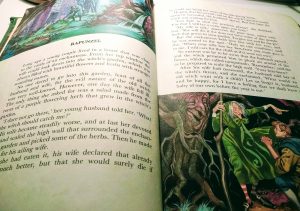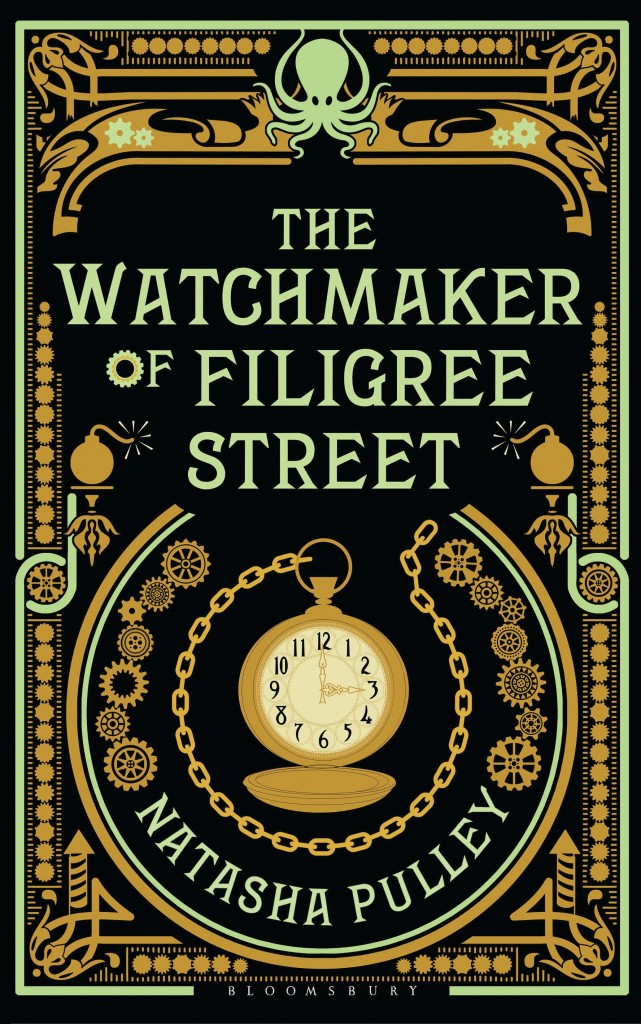Sometimes I get to the point in life when I need a little magic, I want to feel what it might be like to live somewhere different, where the rules have shifted. In late December, after a few weeks of reading back to back crime fiction and juggling a terrifying pre-Christmas to-do list I was desperate for something to take me away from all this. So I rummaged through my TBR pile and surfaced with the prettiest cover I could find.
January’s anger as she throws off her old obedient persona is immensely satisfying
I was lucky enough to get a beautifully designed early reading copy of The Ten Thousand Doors of January by Alix E Harrow. Ornate, foil-trimmed cover? Ooh, yes please. Set in the late Victorian era but with magic? Don’t mind if I do. Doors into other worlds you say? Sign me up now.
It’s the early 20th Century and January Scaller is being raised in a privileged bubble by her wealthy guardian, an eccentric collector of antiquities called Mr Locke, when she discovers that there are doors to different worlds, that her father spends his life travelling and seeking them out for Locke, and that an unknown force is shadowing him and closing the doors down permanently.

And when her father vanishes, her comfortable but oppressive life implodes and January must rely on her wits and her friends to survive and track her father.
That in itself would make for a page-turning adventure but it’s the characters which give the story so much more strength – her mysterious gun-toting Lady’s companion Jane Imru, the enigmatic Locke himself and Bad, her lovable brute of a dog. As January is a person of colour, there’s an extra layer of tension and threat to the story. Inside Locke’s protective bubble she’s seen by his rich friends as “exotic” and objectified as a curiosity, which adds to her frustration and disorientation as she grows up. She doesn’t know who she’s meant to be, how she’s meant to behave. Then the moment she steps outside of it and into mainstream 1900s society she is met with a distrust and hostility which would send a lesser person scurrying back to the gilded cage. January’s anger as she throws off her old, obedient persona is immensely satisfying.
If I had one criticism, it’s this: there’s a plot twist that came as a huge surprise to January and absolutely nobody else around her. Which makes her shocked reaction a little unbelievable – but there is a narrative explanation for it, and it doesn’t ruin the story. By then you’re rooting for her and wondering what her next move is going to be.
Alix E Harrow’s love of words comes through in her loving description of stories, books and even the way letters look on the page, but the book is also a tribute to those other world-shifting stories – Narnia, Middle Earth and others. The worlds we all run to hide out in when this one gets a bit too much. When we’re looking for a place where creatures and colours look different or where the brutal prejudices and ingrained social crappiness we put up with every day are washed away, replaced with something just as flawed but deliciously different, full of infinite possibilities. Just what I needed to get me in the right frame of mind for the year ahead.
If it scratches that otherworldly itch for you too, then nab a copy: The Ten Thousand Doors of January by Alix E Harrow is out now
Or read my review of the dark fairy tale world of The Hazel Wood

 Bluebeard’s chamber was full of the corpses of his former wives, characters are blinded, torn apart by wild animals. It’s worse of course if you’re the stepmother. You could be tricked into eating the minced-up body of your own daughter, rolled down a hill in a barrel lined with nails or, if you were foolish enough to be cruel to Snow White, you could end up with your feet being forced into red-hot iron shoes and dancing yourself to death.
Bluebeard’s chamber was full of the corpses of his former wives, characters are blinded, torn apart by wild animals. It’s worse of course if you’re the stepmother. You could be tricked into eating the minced-up body of your own daughter, rolled down a hill in a barrel lined with nails or, if you were foolish enough to be cruel to Snow White, you could end up with your feet being forced into red-hot iron shoes and dancing yourself to death.
 creatures from her grandmother’s tales might not be fictitious after all.
creatures from her grandmother’s tales might not be fictitious after all. It’s a hugely accomplished book for a debut author, beautifully written and atmospheric. The heroine is tough, scrappy and flawed – although her anger issues are more talked-about than experienced, it would have been fun to explore them more. I had a bit of a crush on her sidekick, Ellery Finch. I’m not at all surprised that the film rights have been sold already.
It’s a hugely accomplished book for a debut author, beautifully written and atmospheric. The heroine is tough, scrappy and flawed – although her anger issues are more talked-about than experienced, it would have been fun to explore them more. I had a bit of a crush on her sidekick, Ellery Finch. I’m not at all surprised that the film rights have been sold already.